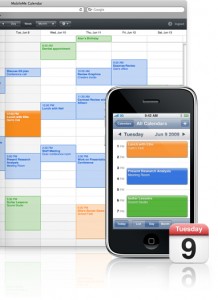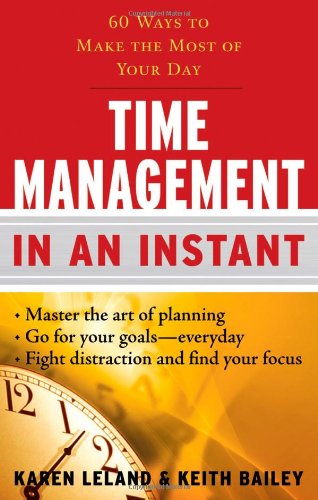
“Time is the stuff that money
is made of.” ~ Greg Johnson
Time Accounting. For most people, time is money. Unless we have multiple streams of residual income, our vocation is partly an effort to convert time into money which in turn becomes food, clothing, shelter, and contentment. Keeping track of how we’ve spent our time, and how we plan to spend it in the future, is a critical part of effective time management. So, tracking our time expenditures is just as important as tracking our financial expenditures. Even if one is independently wealthy, tracking how time is spent allows you make the most of your financial freedom.
Time Expenditures. Daily financial expenditures are limited and relatively easy to keep track of, since we don’t spend money every minute of the day. However, minutes are spent every minute of the day. This makes personal time accounting difficult to keep up with.
“We all spend time at a rate of one minute every minute. The minute is the currency of time. In measuring work and effectiveness, it’s the conversion rate from minutes to dollars and outcomes that matters.” ~ Greg Johnson
More Task Sources. Today we are increasingly inundated by an incoming flow of information, communications, and requests that arrive by many means:
- Face-to-face communications
- Online media
- Phone
- Printed materials
- RSS news feeds
- Skype
- Television
- Text messaging
- Various social networks
- and other sources…
New Work Methods. To keep up with the quantity of information, communications, and request, people are increasingly multitasking, and using mobile devices to continually keep up with work in real-time.
“Multitasking allows various tasks to place a percentage load on our thought process, attention, and energy. Just as various computer programs running each use up a percentage of the processor’s power, tasks we are engaged in require some level of processing power from our brain. So, even listening to music, or talking on the phone while working engages a portion of our attention span. This is partly why texting or talking on a mobile phone while driving can be dangerous.” ~ Greg Johnson
Micro Tasks. Because much of our work today is automated and simplified, more of our work consists of micro-tasks. Rather than tasks taking 30 minutes to an hour to complete, tasks are taking seconds to complete. For projects with a longer duration, a cumulative input of ongoing small investments of time in a project result in its completion.
“When properly done, setting up a typical computer can take several days to complete. The setup can present over 200 screens of information, most of which require a few seconds of user intervention or observation before continuing. It’s really hard to quantify the time invested, and the cost of numerous interruptions during those days. There’s also a subconscious cost of having one’s attention continually monitoring a system that is being setup. Remote control software is essential to ensure that one doesn’t end up stuck in one place while baby sitting a computer.” ~ Greg Johnson
Time Accounting Challenge. For the above reasons, it’s getting increasingly difficult to keep track of how our time is spent because we are frequently doing several things at once and there are so many little tasks that it would be an administrative nightmare to try to account for them all. Traditional time accounting methods don’t work in today’s work environment.
“Video production is another task that requires the completion of many small tasks as well as long periods of waiting while the computer imports, exports, or uploads a video project. So, those involved in video production will likely be engaging in multitasking to accomplish other tasks.” ~ Greg Johnson
Mobile Apps. One solution that offers some promise are mobile time accounting apps. These programs run on Apple iOS and Android devices, and allow a person to periodically document what they are doing by selecting from a list of user defined tasks or categories. At the end of the day or week, the program will provide a cumulative report showing how the person spent their time. Mobile devices offer instant on convenience and pocket-size portability making it more likely you’ll use them. Below is a short list of highly rated time tracking applications along with vendor descriptions.
- Eternity Time Log. ($9.99) “Time is your most precious resource! You can’t get it back. No app can do that for you. But you can learn from your past to improve your future. Define your activities, run timers, review and adjust logs, analyze and export detailed reports. Learn where your time goes!”
- HoursTracker. (2.99) “HoursTracker is perfect for hourly workers that need to turn in a time card or time sheet, contractors who bill for jobs or projects separately, or those who simply just want to keep track of the hours they have worked. Features a streamlined, easy-to-use interface great for use on the go!”
- TDF Tracker. ($9.99) “TDF Tracker is an easy to use, powerful tool for those who need to keep track of time/expenses/mileage. Potential users include consultants, lawyers, accountants, contractors and freelance designers – but can include anyone needing a flexible tool for tracking such items. While you could buy one app as a tracker for billable time, another as a mileage reimbursement log, and yet another for reimbursable expense record keeping – if you are looking for the simplicity of one combined application to truly save you time – then TDF Tracker is the perfect choice.”
- Time Master. ($9.99) “The best, most powerful, comprehensive, easy to use time keeping app on the Apple Store is now even better. Time Master has the highest average rating of all the time management apps. And the other apps don’t come close to our new optional billing module. Our invoices are totally professional.”
Parallel Distributed Time Tracking Challenge. The problem with traditional time accounting methods is that they presume sequential tasks rather than parallel tasks. With financial accounting, it’s common to split a single purchase between two or more accounts. With time tracking, usually a single category or tasks is given prominence for a time slot. Ideally we’d be able to track what percentage of our attention was given to various tasks over a period of time.
Parallel Distributed Time Tracking Solution. A solution to parallel distributed time tracking would be to have a spreadsheet with the time going down the left column and headings across the top row that define what tasks or categories each block of time was dedicated toward. If you were simultaneously on the phone and filing/scanning paperwork at the same time, for a given hour you could put .5 in each column. It wasn’t that you spent 30 minutes on the phone and then 30 minutes filing papers. You actually spent an hour simultaneously doing both. Alternatively, a simple check box method could be used to simply convey that some level of effort was being put toward a particular task or category during that hour. This may be quicker and easier than trying to determine what percentage of your attention was dedicated to a particular task.
Matrix Accounting. A matrix accounting system (for time or money) would allow for accounting of multiple overlapping or independent categories. For example, you may wish to know how much time was spent eating at restaurants in a given week. You might also want to know how much time was spent with a certain client in a given week. How do you account for a one hour lunch at a restaurant with a client? A traditional accounting system would require that you put a one hour lunch in one category or the other. Or, you could assign 30 minutes to two categories. Assigning a full hour to two categories wouldn’t be permitted. The spreadsheet method described above would allow for a matrix accounting system and tracking and analysis of endless variations. A simple database would be an alternative to the spreadsheet method. Matrix accounting is like using multiple keyword tags for categorizing and describing photographs, except you are applying the same principle to expenditures of time.
- Example. Another example of matrix accounting would be tracking how much time was spent exercising in a given week. You can also track how much of that was indoors or outdoors, and how much time was spent on each type of exercise. If you’re also tracking how much time you spend socializing, and you are able to socialize while exercising (such as going for a walk with a friend), then you can include this in calculating your time socializing for the week.
Defining Categories. It’s common on computers to organize files by type. So, we have folders for photos, music, documents, etc. However, these categories are meaningless when it comes to organizing by topic. Were files organized by topic, then everything relating to a certain topic would be found in a single folder (pictures and documents). Similarly, rather than making a distinction between time spent on the phone and time spent responding to emails, it would be more useful to know how much time was spent (on the phone or via email) in working on a specific project or task that was supportive of your ongoing roll, purpose, and priorities. What’s nice about the parallel and matrix time accounting systems described above is that these can accommodate tracking of multiple categories and groups (like an ongoing real-time Venn Diagram that represents how we’re currently spending our time).
Working in Series. Much has been said about the benefits of working in series. In summary, people imagine that multitasking allows them to be more efficient. Yet, if they really studied the return on their investment of time, they would see that the mistakes and oversights made while being distracted make multitasking an ineffective approach to getting things done.
Parallel and Series Hybrid Model. People, like computers, generally work more effectively on one or two, or a few, tasks. If we try to do too much at one time, things slow down, and there can be errors or oversights. Disruptions take us away from multiple tasks and then we have trouble remembering where we were when we go back to them. The likelihood of errors increases. It’s not possible, practical, or effective to work entirely focused all day on a single task at a time. So, finding an efficient balance is the ideal.
“It’s essential to have a time for everything, and everything in its time.” ~ Greg Johnson
Scheduling is the Budget of Time Management. Having a schedule allows you to proactively budget how you want to spend your time based on your priorities. It also helps to have blocks of time dedicated to specific tasks rather than taking everything on at once, since larger blocks of time are easier to account for.
“Scheduling is to time management what budgeting is to financial management.” ~ Greg Johnson
 Resources. There are a variety of books on time management and other resources available.
Resources. There are a variety of books on time management and other resources available.
Click here to visit our online store for time management books.